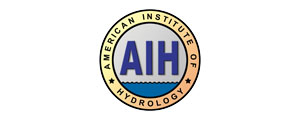
- This event has passed.
AIH Webinar: The Surprisingly Complex Challenge of Rain-Snow Partitioning, & Why It Matters
September 19, 2024 @ 9:00 am - 10:00 am PDT
Registration is open for the next AIH Webinar! Register here.
NEW!!! Included with your registration is access to our 15-minute virtual coffee break. Stay on at the end of the program to meet new colleagues, introduce yourself, and share a favorite summer memory! This is a time to take a break and network with your peers.
AIH members = $0.00 (contact admin@aihydrology.org or (540) 500-1933 for the promotion code)
Lapsed/non-members = $35.00
WEBINAR SUMMARY:
While many look forward to winter snowfall, winter rains may bring devastating flooding. Despite the disparate outcomes of rain and snow, the hydrologic models we trust to make accurate streamflow forecasts often use flawed methods to determine what type of precipitation is falling at the land surface. This results in poor hydrologic predictions. At this point, one may wonder why such issues arise given the freezing point of water is an unequivocal 0°C. Unfortunately, this value happens to be a poor threshold for partitioning precipitation phase because precipitation is typically snow at 0°C and slightly higher air temperatures. Atmospheric temperature profiles, surface humidity, and pressure all affect whether it is raining and snowing, making phase partitioning a surprisingly complex challenge. In this webinar, we will detail the different types of precipitation, identify how hydrologic models differentiate rain versus snow, quantify the errors introduced by incorrectly simulating the precipitation type, and discuss several novel ways of monitoring precipitation phase.
LEARNING OBJECTIVES:
- Identify the three main precipitation phases (rain, snow, and mixed) and how they affect human and natural systems.
- Recognize the pros and cons of different phase partitioning methods in hydrologic models.
- Discover alternative data sources for improving the representation of rain, snow, and mixed precipitation.
SPEAKER:
 Keith Jennings
Keith Jennings
Lead Hydrologist
Lynker
Dr. Jennings is the Lead Hydrologist at Lynker with expertise in hydrologic model development and analysis. As a NOAA Affiliate he is the technical director of the Formulation Team, which creates, modifies, and evaluates the hydrologic models run in the Next Generation Water Resources Modeling Framework (NextGen). He is also the PI of Mountain Rain or Snow, a NASA-funded citizen science project dedicated to increasing the quantity and quality of precipitation phase observations with the goal of improving NASA’s operational products. Much of his previous and ongoing work has focused on improving hydrologic models and remote sensing data to better represent fundamental physical processes across spatial and temporal scales. He uses open-source software and prioritizes reproducibility in his work, making his research available via GitHub, open data repositories, and open-access journals. When not doing hydrology, you can find him mountain biking in the forests of Vermont.
Click here to register for the webinar!
Participating in this webinar qualifies as a continuing education credit for professional hydrologists. 1 Contact hour = 1 PDH/PDC. Learn more about AIH’s continuing education guidance online here.
Interested in the AIH join/certification process? Learn more here.

